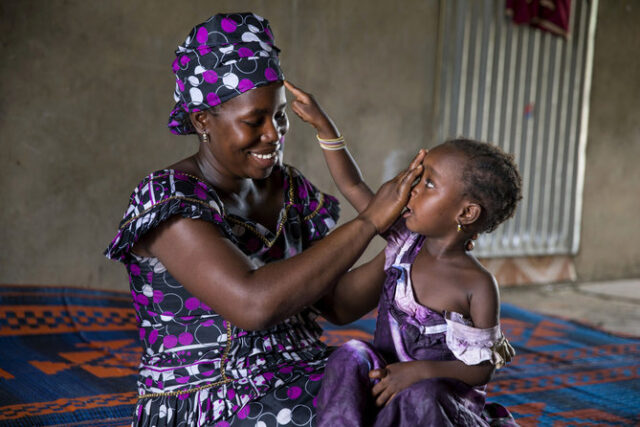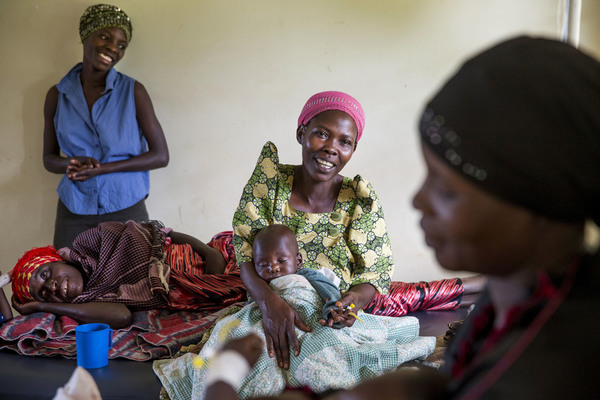The power of an image should never be underestimated. But why is it sometimes so difficult to find uplifting photos?
The William and Flora Hewlett Foundation teamed up with Getty Images to change this situation. Last summer, South Africa-based photojournalist Jonathan Torgovnik visited several communities throughout Kenya, Senegal and Uganda to take photograph and document women who are taking control of their health, their livelihoods and their ability to make choices for themselves and their families. Over 400 images were gathered and compiled into a resource for NGOs working on global development and women’s issues, so that they may be able to tell a more holistic visual story of what is going on around the world. The results, as you can see below, were absolutely incredible.

THIES, SENEGAL: Women working at a millet factory as an income generating activity. The women use the income generated to have some financial independence, help with sharing the family expenditures, and not rely on their husband when spending money on their health and education for their children. This income also helps them when deciding on family planning options. (Photo by Jonathan Torgovnik/Reportage by Getty Images).

KEUR ALPHA, SENEGAL: A mother interacting with her daughter as part of TOSTAN’s Reinforcement of Parental Practices Module, where by applying the knowledge gained during the Reinforcement of Parental Practices Module, parents and community members will give children an excellent start in their social, linguistic, and emotional growth. This healthy development will in turn lead to more children staying in and excelling in school, and improve child parent relationship. (Photo by Jonathan Torgovnik/Reportage by Getty Images).

SAHRE BOCAR, SENEGAL: Women going through the TOSTAN Community Empowerment Program, where women participants learn about their right to health and their right to be free from all forms of violence, about hygiene, and how diseases are spread and prevented. They also discuss the health risks of harmful practices such as female genital cutting and child/forced marriage, and how to improve child and maternal health in their village. (Photo by Jonathan Torgovnik/Reportage by Getty Images).

TORORO, UGANDA: A member of the Kaku women’s group, working in Banana plantation that is used as an inchme generating activity for the group. The women use the income to support their families and pay the school fees for their children. (Photo by Jonathan Torgovnik/Reportage by Getty Images).

KATAEK, UGANDA: Women from the Aberu Kanyoutu group selling vegetables and fish in a local market. This income generating activity was supported by DSW Uganda. The women use the income to support their families and pay the school fees for their children. (Photo by Jonathan Torgovnik/Reportage by Getty Images).

KATAEK, UGANDA: Women from the Aberu Kanyoutu group making cloths with sewing machines provided by DSW Uganda. They later sell the cloths in local markets and to members of the community they live in. This income generating activity helps support their families and pay the school fees for their children. (Photo by Jonathan Torgovnik/Reportage by Getty Images).

PAKAM KISOKO, UGANDA: Women from the Pakamu Women and Girls group meeting to make Tie and Die garments as an income generating activity. They sell the garments in the market and use the income to improve their livelihood and provide for their families. (Photo by Jonathan Torgovnik/Reportage by Getty Images).

OLOIKA, KENYA: Maasai tribe students at the Oloika school that is supported by AMREF. This school supports alternative rights of passage for young Maasai tribe girls, that would prevent them from going through the traditional female circumcision and keep them in school through secondary school. (Photo by Jonathan Torgovnik/Reportage by Getty Images).

SHOMPOLE, KENYA: Maasai tribe students at the Shompole school that is supported by AMREF. This school supports alternative rights of passage for young Maasai tribe girls, that would prevent them from going through the traditional female circumcision and keep them in school through secondary school. (Photo by Jonathan Torgovnik/Reportage by Getty Images).

